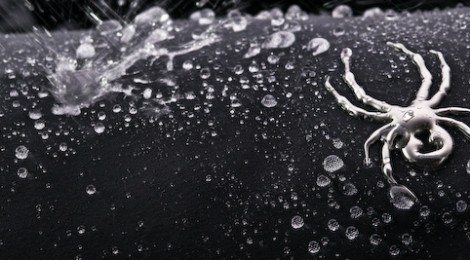
How to Take Care of Durable Water Repellent Materials?
My husband and I attended Outdoor University in the past. We learned many useful tips and information about technical apparels/gears from Christ Bennett-Gagner. Today, I will share those information, specifically on DWR (Durable Water Repellent) materials: what it is, how it works, how it wears off and how to treat it.
What is DWR (Durable Water Repellent) materials?
DWR (durable water repellent) is a coating applied to a fabric during manufacturing process in order to make it water-resistant or hydrophobic. Most factories use fluoropolymer base coating. Durable water repellent coating is commonly applied in conjunction with waterproof, breathable membrane such as Gore-Tex, eVent, Keen Dry, etc. to prevent the outer layer of the fabric from becoming saturated with water.
How does DWR materials work?
DWR material resists contact with water — water will bead up upon contact with DWR treated material. It forces water to move back to the surface. When water or rain drops hit the fabric surface, the water droplets will distort and will not enter the fabric.
How does DWR materials wear off?
When DWR materials wear-off, it is called “fabric wet out”. Fabric wet out can be caused by dirt, campfire smoke, insect repellent, and other contaminants. These contaminants attract water and reduce the beading up of droplets on the fabric surface. The contaminants also cause the spaces between fibers become clogged. Therefore, reducing the breath-ability of the material. Our bodies generate humidity and it condenses inside the wet-out garments, causing you to feel clammy and cold. This leads you to believe that the fabric is leaking. This is a sign that tells you, it is time to treat the fabric.
How to take care of DWR materials?
Tips: Always refer to the manufacturer’s cleaning and washing instructions available on the care tag for water temperature, etc. prior to applying the steps below.
Taking care of DWR materials involve two steps:
Step 1 – Cleaning
You should wash DWR materials with special cleaning agents, such as Nikwax Tech Wash/Down Wash, Granger’s G-Wash Cleaner/Down Wash Plus, Tectron Prowash/Fabric Cleaner.
It is important to wash DWR materials with these products because regular detergents or soap products leave residues. Fabric softeners, fragrances, color brighteners, and cleaning agents prevent the existing waterproof coating from bonding securely to the fabric fibers. To sum up, the performance and durability of the waterproofing treatments are maximized when using DWR cleaning agents.
Step 2 – Restoring
To restore water repellency, you can use the following products:
a. Nikwax TX. Direct Wash In or Spray On, Polar Proof, DOwn Proof, Glove Proof, Rope Proof, Soft Shell Proof, Tent and Gear Proof
b. Granger’s Wash-In Waterproofing for Synthetic Fabrics or Spray On, Tent & Gear UV Waterproofing, Soft Shell UV Proof
c. Tectron Wetguard DWR
These products are available on Spray-On and Wash-In.
The Spray-On is ideal for DWR garments that cannot be machine washed. For examples, technical wears with high-tech bi-component wicking liners and soft shell items. Spray-On also works great for touching up areas.
Wash-In is most appropriate for machine washable garments because the washing machine does all the work and provides thorough coverage.
Maintaining your DWR materials regularly with those products, as explained above, will preserve or even improve the performance of your DWR garments.
I hope this article will help improve your knowledge on how to clean, treat and protect your DWR garments. We all spend so much $$$ on our technical wears/gears; nobody wants to damage it at their first wash just because they don’t know well enough how to take care of it. Have fun!


